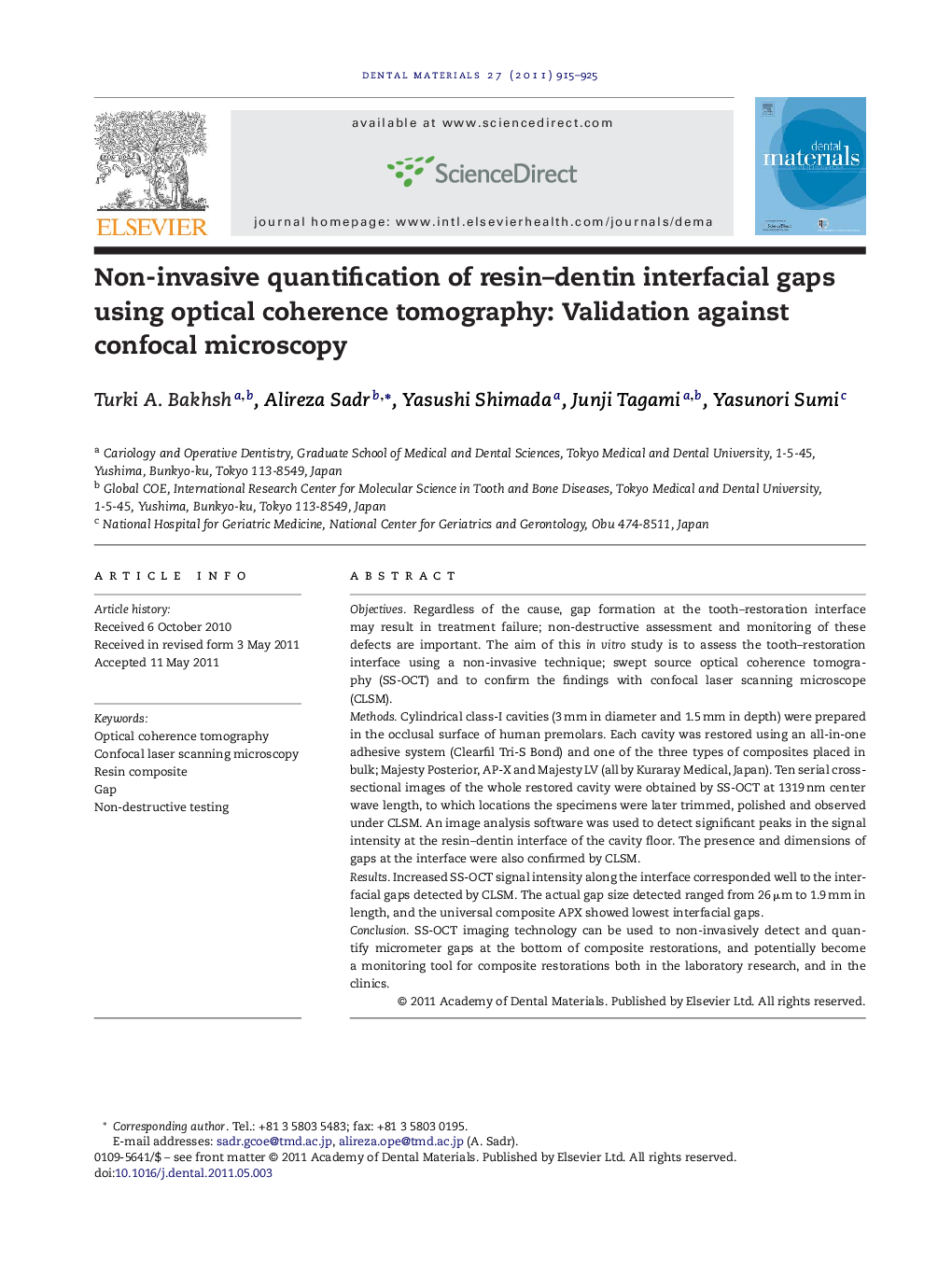| کد مقاله | کد نشریه | سال انتشار | مقاله انگلیسی | نسخه تمام متن |
|---|---|---|---|---|
| 1422359 | 986444 | 2011 | 11 صفحه PDF | دانلود رایگان |

ObjectivesRegardless of the cause, gap formation at the tooth–restoration interface may result in treatment failure; non-destructive assessment and monitoring of these defects are important. The aim of this in vitro study is to assess the tooth–restoration interface using a non-invasive technique; swept source optical coherence tomography (SS-OCT) and to confirm the findings with confocal laser scanning microscope (CLSM).MethodsCylindrical class-I cavities (3 mm in diameter and 1.5 mm in depth) were prepared in the occlusal surface of human premolars. Each cavity was restored using an all-in-one adhesive system (Clearfil Tri-S Bond) and one of the three types of composites placed in bulk; Majesty Posterior, AP-X and Majesty LV (all by Kuraray Medical, Japan). Ten serial cross-sectional images of the whole restored cavity were obtained by SS-OCT at 1319 nm center wave length, to which locations the specimens were later trimmed, polished and observed under CLSM. An image analysis software was used to detect significant peaks in the signal intensity at the resin–dentin interface of the cavity floor. The presence and dimensions of gaps at the interface were also confirmed by CLSM.ResultsIncreased SS-OCT signal intensity along the interface corresponded well to the interfacial gaps detected by CLSM. The actual gap size detected ranged from 26 μm to 1.9 mm in length, and the universal composite APX showed lowest interfacial gaps.ConclusionSS-OCT imaging technology can be used to non-invasively detect and quantify micrometer gaps at the bottom of composite restorations, and potentially become a monitoring tool for composite restorations both in the laboratory research, and in the clinics.
Journal: Dental Materials - Volume 27, Issue 9, September 2011, Pages 915–925